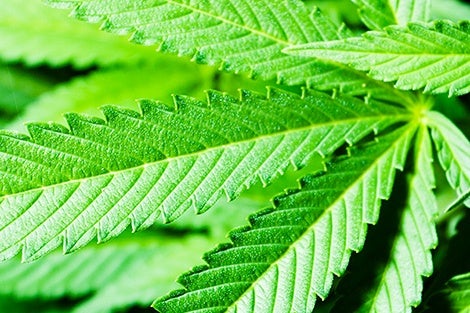For immediate release: February 5, 2019
Boston, MA – Men who have smoked marijuana at some point in their life had significantly higher concentrations of sperm when compared with men who have never smoked marijuana, according to new research led by Harvard T.H. Chan School of Public Health. The study, conducted in the Fertility Clinic at Massachusetts General Hospital, also found that there was no significant difference in sperm concentrations between current and former marijuana smokers.
“These unexpected findings highlight how little we know about the reproductive health effects of marijuana, and in fact of the health effects of marijuana in general,” said Jorge Chavarro, associate professor of nutrition and epidemiology at Harvard Chan School. “Our results need to be interpreted with caution and they highlight the need to further study the health effects of marijuana use.”
The study was published on February 5, 2019 in Human Reproduction.
It is estimated that 16.5% of adults in the U.S. use marijuana, and support for legal recreational use of marijuana has increased dramatically in recent years. Understanding the health effects associated with marijuana use is important given the growing perception that it poses few health hazards.
The researchers hypothesized that marijuana smoking would be associated with worse semen quality. Previous studies on marijuana have suggested that it is associated with negative effects on male reproductive health, but most of those studies had focused on animal models or on men with histories of drug abuse.
For this study, researchers collected 1,143 semen samples from 662 men between 2000 and 2017. On average, the men were 36 years old, and most were white and college educated. Additionally, 317 of the participants provided blood samples that were analyzed for reproductive hormones. To gather information on marijuana use among study participants, researchers used a self-reported questionnaire that asked the men a number of questions about their usage, including if they had ever smoked more than two joints or the equivalent amount of marijuana in their life and if they were current marijuana smokers.
Among the participants, 365, or 55%, reported having smoked marijuana at some point. Of those, 44% said they were past marijuana smokers and 11% classified themselves as current smokers.
Analysis of the semen samples showed that men who had smoked marijuana had average sperm concentrations of 62.7 million sperm per milliliter of ejaculate while men who had never smoked marijuana had average concentrations of 45.4 million sperm per milliliter of ejaculate. Only 5% of marijuana smokers had sperm concentrations below 15 million/mL (the World Health Organization’s threshold for “normal” levels) compared with 12% of men who had never smoked marijuana.
The study also found that among marijuana smokers, greater use was associated with higher serum testosterone levels.
The researchers cautioned that there are several potential limitations to the findings, including that participants may have underreported marijuana use given its status as an illegal drug for most of the study period. The researchers emphasized that they do not know to what extent these findings may apply to men in the general population as the study population consisted of subfertile men in couples seeking treatment at a fertility center. Additionally, they noted that there are few similar studies to compare their results against.
“Our findings were contrary to what we initially hypothesized. However, they are consistent with two different interpretations, the first being that low levels of marijuana use could benefit sperm production because of its effect on the endocannabinoid system, which is known to play a role in fertility, but those benefits are lost with higher levels of marijuana consumption,” said Feiby Nassan, lead author of the study and a postdoctoral research fellow at Harvard Chan School. “An equally plausible interpretation is that our findings could reflect the fact that men with higher testosterone levels are more likely to engage in risk-seeking behaviors, including smoking marijuana.”
Other Harvard Chan School study authors included Mariel Arvizu, Lidia Mínguez-Alarcón, Paige Williams, and Russ Hauser.
Funding for the study came from National Institute of Environmental Health Sciences grants R01ES009718 and P30ES000002.
“Marijuana smoking and markers of testicular function among men from a fertility centre,” Feiby L. Nassan, Mariel Arvizu, Lidia Mínguez-Alarcón, Paige L. Williams, Jill Attaman, John Petrozza, Russ Hauser, and Jorge Chavarro, Human Reproduction, online February 5, 2019, DOI: 10.1093/humrep/dez002
Visit the Harvard Chan School website for the latest news, press releases, and multimedia offerings.
For more information:
Chris Sweeney
617.432.8416
csweeney@hsph.harvard.edu
###
Harvard T.H. Chan School of Public Health brings together dedicated experts from many disciplines to educate new generations of global health leaders and produce powerful ideas that improve the lives and health of people everywhere. As a community of leading scientists, educators, and students, we work together to take innovative ideas from the laboratory to people’s lives—not only making scientific breakthroughs, but also working to change individual behaviors, public policies, and health care practices. Each year, more than 400 faculty members at Harvard Chan School teach 1,000-plus full-time students from around the world and train thousands more through online and executive education courses. Founded in 1913 as the Harvard-MIT School of Health Officers, the School is recognized as America’s oldest professional training program in public health.
